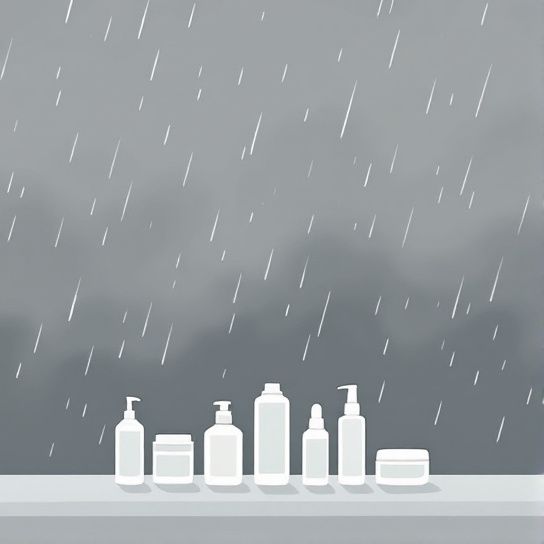Hey there, let’s get real for a sec: our skin takes a serious hit indoors. Sure, escaping outside heat can feel like a dream when your home is perfectly cozy. But did you know that living in an indoor heated environment can also mean trouble for your skin? And I’m not just talking about a bit of rosy cheek action—it’s a little more problematic than that. Yep, indoor climate acne is a thing, and if you’re reading this, chances are you’re feeling it too. So, let’s dive right into the hows and whys and, more importantly, what on Earth you can do about it.
The Problem with Indoor Heating
You know that blissful, toasty warmth enveloping your room? Turns out, your skin’s not a fan. Central heating might feel wonderful in freezing weather, but it dries out the air and, well, your skin. This dryness can lead to the dreaded climate acne—a rash of blemishes that appear when your skin’s delicate balance gets disrupted. Bear with me, it might sound technical, but it all boils down to moisture, or the lack thereof.
Moisture Matters
Here’s the scoop: when there’s less moisture in the air, your skin goes into overdrive producing oil to compensate. Simple logic, right? But this over-production of oil doesn’t make nice with your pores. Instead, it can lead to clogged pores and, guess what, acne! And if you’re finding your skin’s betraying you more than usual lately, it might really just be all about humidity—or the lack of it.
Aside and funny enough, it’s just like when you water a stubborn plant and suddenly it’s blooming all over the place. Our skin loves when it’s got the right amount of moisture too, and why shouldn’t it?
Understanding Climate Acne
Ok, so what exactly is climate acne aside from an indoor nuisance? It’s those annoying breakouts that are directly impacted by the climate or environment, like your pimple-provoked skin reacting to weather swing buttons. Central heating, low humidity levels, and general dry indoor warmth happen to make a perfect recipe for this kind of acne.
In Short, It’s Personal
Where you live, the type of heating system you have, and even how you’re handling seasonal changes all play a starring role. Treating indoor climate acne means understanding your specific situation and adapting your skincare routine accordingly. Kind of becomes personal, doesn’t it?

Tell-Tale Signs
Not quite sure if your acne is playing the climate game? Look for these signs:
- Consistency: Breakouts appearing in similar patterns, especially during colder months.
- Dryness Yet Oiliness: Skin feels tight but manages to be oily, especially around the T-zone.
- Redness and Irritation: Persistent redness and sensitivity more than usual right when you’ve turned your heating system up for the year.
Strategies for Indoor Skin Bliss
Enough about the bad news. Let’s switch gears and talk simple strategies you can give a whirl:
Humidify Your Space
Remember, moisture is your skin’s best ally. Investing in a good humidifier can keep indoor air from becoming too dry. Scatter a few around your home, particularly where you spend most of your time, like the bedroom and office.
Hydrate Inside and Out
Don’t skimp on the H2O. Drinking water remains one of your best defenses against dehydration. And while we’re at it, think about using hydrating skincare products, like those with hyaluronic acid or glycerin. They lock moisture in and prevent skin from getting overly dry.
Gentle Cleansing Approach
Use a mild, hydrating cleanser that doesn’t strip the natural oils. It’s tempting to over-cleanse if you’re feeling greasy—don’t. Once or twice daily is plenty unless you really hit the gym hard or have exposed yourself to a particularly sweaty situation.
Moisturizers Are Non-Negotiable
A rich moisturizer is ideal in colder months. More of an oily-skin person? No worries, just find a non-comedogenic formula that locks in moisture without the breakout side-effects. Keep paneer marinades, not your face oil, I say.

Adopt New Habits
Switching behaviors might seem tricky at first but can make a real difference long-term.
Find Friendly Textures
That means cozy sweaters, duh, but also what your face touches. Start reaching for pillowcases made out of natural, breathable fibers like cotton or bamboo. Oh, and here’s a cheeky addition: switch up your face masks to accommodate this too!
Light and Heat Limitations
Stay cozy, but don’t cotch up by the radiator. The instant heat feels perfect for two minutes until your skin feels parched. Try setting the thermostat at a sweet-spot temp— you know, that ‘not freezing but not the Sahara’ feel.
Indoor Skincare Rituals
Moving from prevention to protection means leveling up with some well-curated rituals.
Natural Masks and Remedies
Achieving great skin isn’t always about cutting-edge technology. Explore natural remedies! Think honey masks (so soothing) or yogurt and oatmeal concoctions for extra comfort.
Chemical Exfoliation, but Carefully
Exfoliation helps to unclog pores and remove dead skin cells, helping those pores breathe before the big panic. Still, focus more on chemical exfoliation when facing indoor heat stressors. Look for products containing AHAs or BHAs but use sparingly.

SPF Isn’t Just for Sunshine
Potentially surprising, but true. The sun may be chill, but UV rays bouncing from glass still exist all year round. A good broad-spectrum SPF is just an edition you shouldn’t consider seasonal.
Becoming Your Own Skin Detective
No two face journeys are the same, and that’s the crux of challenging indoor climate acne.
Track Your Triggers
Start small: keep a skin diary, note the climate, diet, and routines accompanying any flare-ups. Before long, you’ll spot a pattern or two and be two steps closer to knowing your enemy.
Patience and Persistance
Has it been a few weeks and you see no change? Hold tight, it’s common for our skin to need more time to rebalance and adjust. Don’t misplace faith in your new regime too early. Trust me on this one.
Know When to Call in Big Guns
Some battles require reinforcements, and if you feel like things just aren’t cutting it, or redness and breakouts are escalating, head to a dermatologist. In the end, a pro can provide tailored advice or therapies that can turn a frustration into an insight.
Concluding Conversations
So that’s a little guide on trying to wrestle this puzzling foe, indoor climate acne. At the heart of it, just turn back to honoring your skin’s need for balance, protect its moisture, adjust its exposure to heated elements, and explore what suits it best. It’ll thank you for tuning your indoor environments to a more cozy rhythm, promise.
Don’t be stressed if indoor heat skin care seems illegible at first try, improvement comes from recognizing a bit here and another there. Our environment is a mighty force, but hey, armed with a little more understanding, you’re a match. Indoor bliss really is just a practice away, friends. Let’s pivot with less fluster, more glow.
Frequently Asked Questions
How does climate change affect acne?
Climate change can exacerbate acne through several mechanisms. Warmer temperatures and increased UV radiation can stimulate the growth of *Cutibacterium acnes*, a bacteria associated with acne. Additionally, higher temperatures increase sebum levels, and increased humidity can cause pilosebaceous unit swelling, leading to acne flares[2][3].
What environmental factors contribute to climate acne?
Environmental factors such as air pollution, temperature changes, humidity, and sun exposure play significant roles in the development of climate acne. Air pollution can lead to oxidative stress and skin damage, while temperature and humidity changes can affect sebum production and skin hydration, making it more prone to acne[1][2][3].
How do seasonal changes impact acne?
Seasonal changes can significantly impact acne. During the transition from warm to cold weather, dry air can lead to overproduction of sebum, causing winter acne. Conversely, humid air in warmer seasons can trap oil on the skin’s surface, creating an environment where acne-causing bacteria can thrive[4][5].
What skincare practices can help mitigate climate acne?
To mitigate climate acne, it is important to maintain a consistent skincare routine. This includes using gentle cleansers, moisturizers that balance hydration and oil control, and non-comedogenic sunscreens. Adjusting your skincare products according to seasonal changes and avoiding harsh ingredients can also help[1][4][5].
References- How the environment & pollution affects your skin | Proactiv®.
- Acne Flares May be Worsened by Climate Change | Dermatology Times.
- A Review of Advancement on Influencing Factors of Acne | PMC.
- Dermatologist Tips: Preventing and Treating Winter Acne | Westlake Dermatology.
- Does a change in weather lead to seasonal acne? | Proactiv®.











